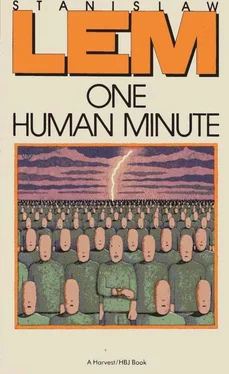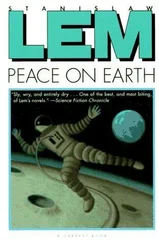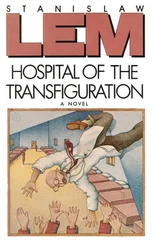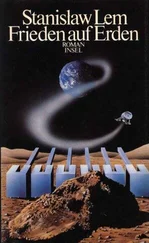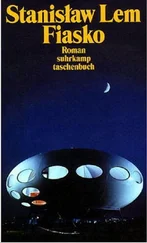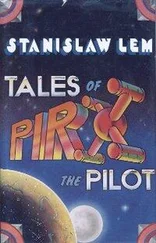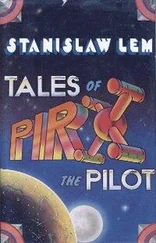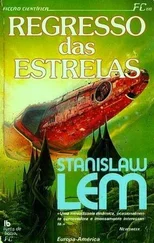This fundamental problem must be explained carefully, because scientists were for a long time unable to base any technological activity on the randomness of complex systems. To counteract malfunctions in such systems, engineers introduced redundancy: power reserves, for example, or — as with the first American space shuttles (like the Columbia) — the doubling, even quadrupling of parallel, onboard computers. Total reliability is unattainable: if a system has a million elements and each element will malfunction only one time out of a million, a breakdown is certain.
The bodies of animals and plants consist of trillions of functioning parts, yet life copes with the phenomenon of inevitable failure. In what way? The experts call it the construction of reliable systems out of unreliable components. Natural evolution uses various tactics to counteract the fallibility of organisms: the capacity for self-repair or regeneration; surplus organs (this is why we have two kidneys instead of one, why a half-destroyed liver can still function as the body’s central chemical-processing plant, and why the circulatory system has so many alternate veins and arteries); and the separation of control centers for the somatic and psychic processes. This last phenomenon gave brain researchers much trouble: they could not understand why a seriously injured brain still functioned but a slightly damaged computer refused to obey its programs.
Merely doubling control centers and parts used in twentieth-century engineering led to the absurd in actual construction. If an automated spaceship going to a distant planet were built according to the directive of multiplying pilot computers, as in the shuttles, then it would have to contain — in view of the duration of the flight — not four or five but possibly fifty such computers. They would operate not by “linear logic” but by “voting": once the individual computers ceased functioning identically and thus diverged in their results, one would have to accept, as the right result, what was reached by the majority. But this kind of engineering parliamentarianism led to the production of giants burdened with the woes typical of democracies: contradictory views, plans, and actions. To such pluralism, to such programmed elasticity, there had to be a limit.
We should have begun much earlier — said the twenty-first-century specialists — to learn from biological evolution, whose several-billion-year existence demonstrates optimal strategic engineering. A living organism is not guided by “totalitarian centralism” or “democratic pluralism,” but by a strategy much more complex. Simplifying, we might call it a compromise between concentration and separation of the regulating centers.
Meanwhile, in the late-twentieth-century phase of the arms race, the role of unpredictable chance increased. When hours (or days) and miles (or hundreds of miles) separate defeat from victory, and therefore an error of command can be remedied by throwing in reserves, or retreating, or counterattacking, then there is room to reduce the element of chance. But when micromillimeters and nanoseconds determine the outcome, then chance enters like a god of war, deciding victory or defeat; it is magnified and lifted out of the microscopic scale of atomic physics. The fastest, best weapons system comes up against the Heisenberg uncertainty principle, which nothing can overcome, because that principle is a basic property of matter in the Universe. It need not be a computer breakdown in satellite reconnaissance or in missiles whose warheads parry defenses with laser beams; if a series of electronic defensive impulses is even a billionth of a second slow in meeting a similar series of offensive impulses, that is enough for a toss of the dice to decide the outcome of the Final Encounter.
Unaware of this state of affairs, the major antagonists of the planet devised two opposite strategies. One can call them the “scalpel” and the “hammer.” The constant escalation of pay-load megatonnage was the hammer; the improvement of detection and swift destruction in flight was the scalpel. They also reckoned on the deterrent of the “dead man’s revenge": the enemy would realize that even in winning he would perish, since a totally obliterated country would still respond — automatically and posthumously — with a strike that would make defeat universal. Such was the direction the arms race was taking, and such was its destination, which no one wanted but no one knew how to avoid.
How does the engineer minimize error in a very large, very complex system? He does trial runs to test it; he looks for weak spots, weak links. But there was no way of testing a system designed to wage global nuclear war, a system made up of surface, submarine, air-launched, and satellite missiles, antimissiles, and multiple centers of command and communications, ready to loose gigantic destructive forces in wave on wave of reciprocal atomic strikes. No maneuvers, no computer simulation, could re-create the actual conditions of such a battle.
Increasing speed of operation marked each new weapons system, particularly the decision-making function (to strike or not to strike, where, how, with what force held in reserve, at what risk, etc.), and this increasing speed also brought the incalculable factor of chance into play. Lightning-fast systems made lightning-fast mistakes. When a fraction of a second determined the safety or destruction of a region, a great metropolis, an industrial complex, or a large fleet, it was impossible to achieve military certainty. One could even say that victory had ceased to be distinguishable from defeat. In a word, the arms race was heading toward a Pyrrhic situation.
On the battlefields of yore, when knights in armor fought on horseback and foot soldiers met at close quarters, chance decided the life or death of individuals and military units. But the power of electronics, embodied in computer logic, made chance the arbiter of the fate of whole armies and nations.
Moreover — and this was quite a separate thing — blueprints for new, better weapons were developed so quickly that industry could not keep pace. Control systems, targeting systems, camouflage, maintenance and disruption of communications, the strike capability of so-called conventional weapons (a misleading term, really, and out of date) became anachronisms even before they were put into the field.
That is why, in the late eighties, production was frequently halted on new fighter planes and bombers, cruise missiles, anti-antimissiles, spy satellites, submarines, laser bombs, sonars, and radars. That is why prototypes had to be abandoned and why so much political debate seethed around successive weapons that swallowed huge budgets and vast human energies. Not only did each innovation turn out to be far more expensive than the one before, but many soon had to be written off as losses, and this pattern continued without letup. It seemed that technological-military invention per se was not the answer, but, rather, the speed of its industrial implementation. This phenomenon became, at the turn of the century, the latest paradox of the arms race. The only way to nullify its awful drain on the military appeared to be to plan weapons not eight or twelve years ahead, but a quarter of a century in advance — which was a sheer impossibility, requiring the prediction of new discoveries and inventions beyond the ken of the best minds of the day.
At the end of the twentieth century, the idea emerged of a new weapon that would be neither an atom bomb nor a laser gun but a hybrid of the two. Up to then, there were fission (uranium, plutonium) and fusion (thermonuclear, hydrogen-plutonium) bombs. The “old” bomb, in breaking nuclear bonds, unleashed every possible sort of radiation: gamma rays, X-rays, heat, and an avalanche of radioactive dust and lethal high-energy particles. The fireball, having a temperature of millions of degrees, emitted energy at all wavelengths. As someone said, “Matter vomited forth everything she could.” From a military standpoint it was wasteful, because at ground zero all objects turned into flaming plasma, a gas of atoms stripped of their electron shells. At the site of the explosion, stones, trees, houses, metals, bridges, and human bodies vaporized, and concrete and sand were hurled into the stratosphere in a rising mushroom of flames. “Conversion bombs” were a more efficient version of this weapon. They emitted what the strategists required in a given situation: either hard radiation — in which case it was called a “clean bomb,” striking only living things — or thermal radiation, which unleashed a firestorm over hundreds of square miles.
Читать дальше
